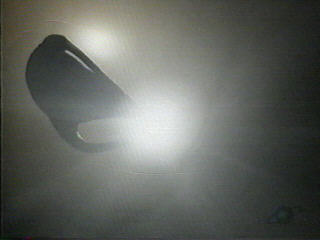
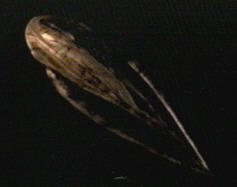
Perhaps the bravest challenge taken on by the producers of Farscape, more remarkable even than evoking Rygel's diminutive, aquatic form, is placing the bulk of the action of the series in a living ship. The idea of such a ship isn't all that new, but the production difficulties involved have meant that apart from the dead living ship in Alien there are few examples of this idea being successfully integrated into popular fictional works. Well, there are the Vorlon ships from Babylon 5, but they seem to lack both real free will and an enduring plotline.
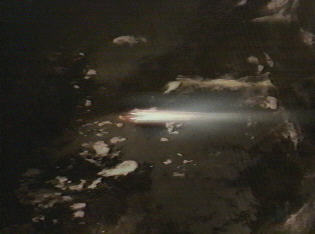
Inside this living ship most surfaces curve and fold into each other, and are also plyable to a degree, and sensitive such that the ship to reacts when it is damaged. The humming and whoosing background noises that one expects to hear on starships are replaced with cooing and burbling that changes greatly depending on the setting and mood and reveals aspects of Moya's condition. Problems internal to the living ship are diagnosed and attended by roving mechanical units called DRDs. As extensions of the ship itself the DRDs are sometimes not to be found, and sometimes appear in great numbers. They may function primarily as observers, or can be used as mechanics or even diminutive soldiers.
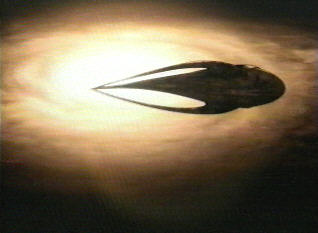
The machinations of the living ship and its host of attending DRDs are given focus in the ship's Pilot, a creature that is joined with Moya in a central chamber and works with Moya to maintain her biomechanoid systems, particularly the support systems for the crew. Pilot acts as voice for ship, and guides the collective efforts of Moya and her DRDs.
For any starship one of the most central questions is how energy is generated and stored to be used for propulsion. Some basic facts about Moya's energy use and propulsion have come up, but the essentials remain vague. It is clear that Moya is a fast ship, but when systems are damaged, achievable speed may be reduced. On several occasions Moya has to balance energy use among systems and delay or forgo starburst. So it seems that energy is being steadily generated or collected or both.
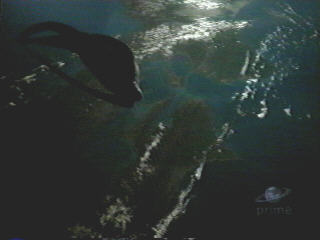
One of the most intriguing questions the biomechanoid ship raises is that of its origins. Some of the aspects of the ship such as the flat floors and gravity and control systems seem clearly to be designed for the use of some kind of being not that different from the humanoids that are seen on board. But some of the things that the ship does, such as starbursting to compensate for variations in its internal functions, don't seem particularly well adapted to general use and bring up the idea that Leviathans might be an adapted form of life that did exist free at one time. Such creatures would have no pilots or DRDs, but presumably would get by without. There is an interesting remark made by Pilot about how young Leviathans may play with gravity wells which further reinforces the perception of potential independence.
There are even some slightly troubling aspects to this in that Pilot and Moya through Pilot express a consistent desire to serve others. This is reasonable for them in their situation, and might be necessary if Leviathans are to be effectively used as tools. But they function so effectively as servants that it seems that in some sense their independence was sacrificed by whoever created the system of DRD-supported Leviathan-Pilot pairs in the first place.
In an early episode Moya finds out from direct personal experience what exactly this particularly bizarre "debris cloud" is actually made of. The quality of the effects is really something to see, and once again it's too bad that a couple of frames don't do the sequence justice, so there's not much alternative but to go watch Farscape direct from the Sci-Fi channel whever possible.
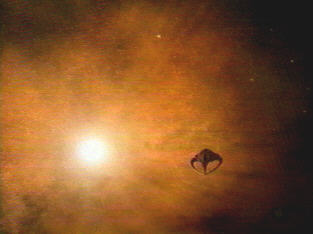
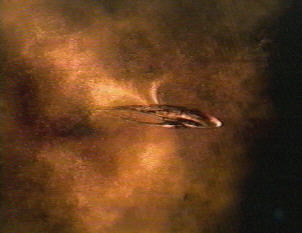
Leviathans have the capability to defend themselves with a maneuver called starburst which causes the ship to, after a spectacular build up and release of energy, be projected a great distance. Under ideal circumstances navigational instruments can locate the destination on arrival, but this is not necessarily assured.
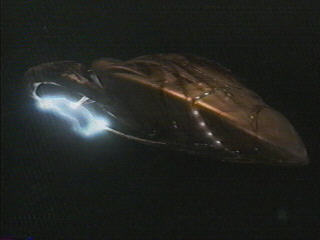
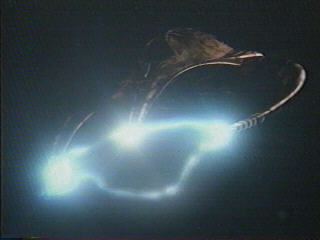
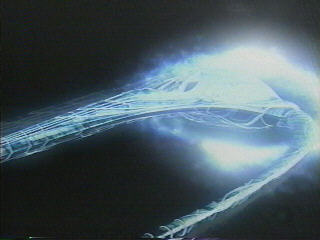
Performing a starburst takes a large amount of energy, so even in the best of times it is not possible to starburst again for some time after having done. When energy reserves are low starburst can be entirely prevented for a protracted time. Beginning a starburst without sufficient energy typically causes some pyrotechnics, but on one occasion causes Moya to become wedged extradimensionally.
Starburst also appears to play a vital part in the functioning of the internals of the biomechanoid ship, as there are several occasions when starburst happens essentially spontaneously. At one point this happens when the amnexus system does not flush properly causing Moya to decompensate with an immediate starburst. This brings up an interesting question of how exactly the starburst cleared the blockage. Possibly the material was left behind, or the effort of starburst causes a systemic purge?